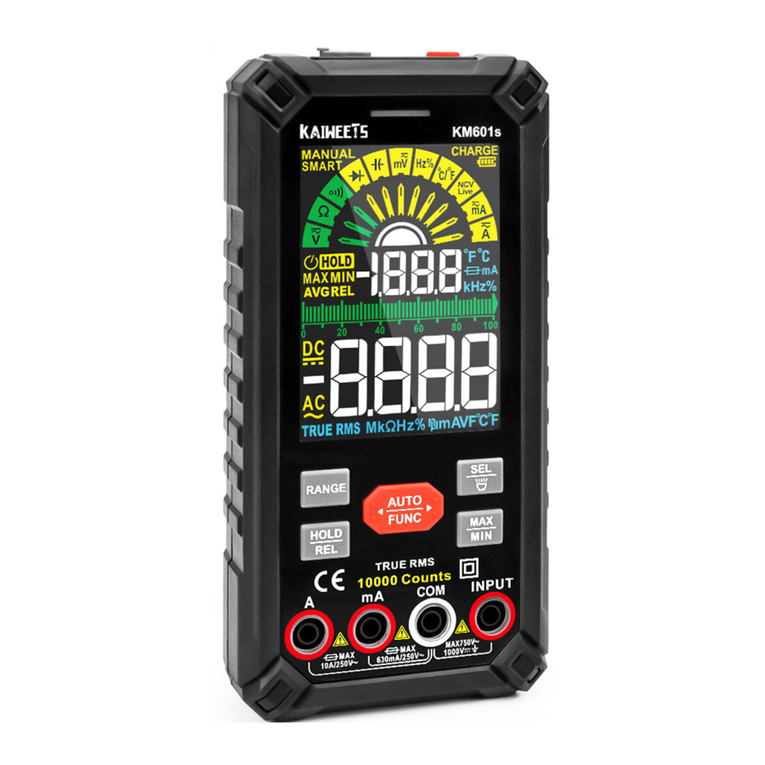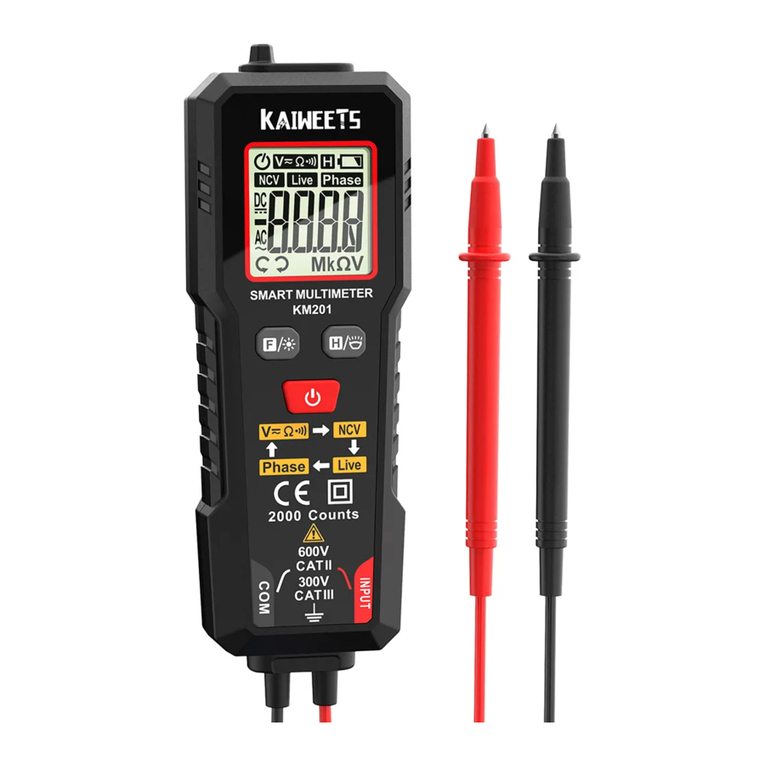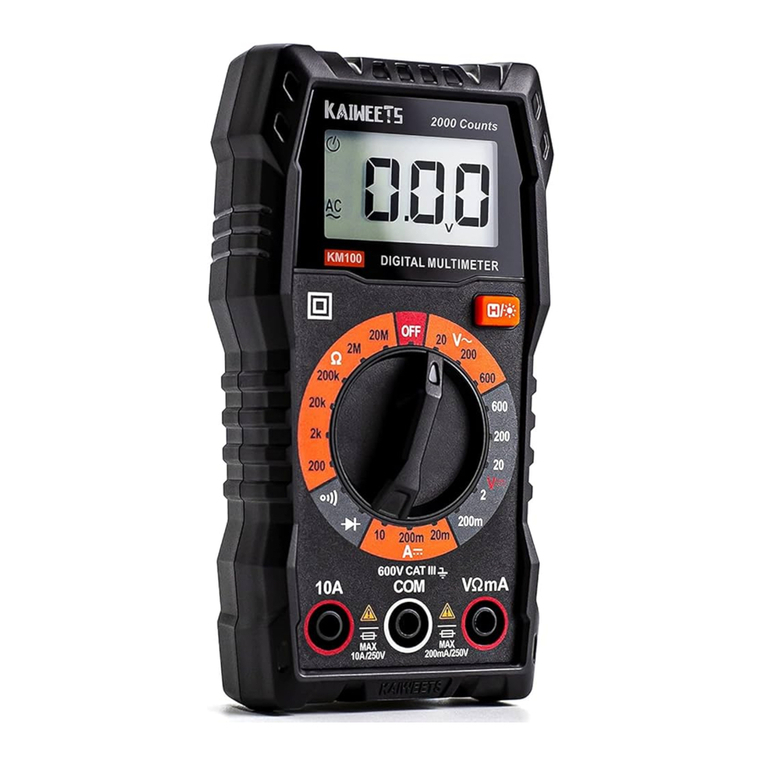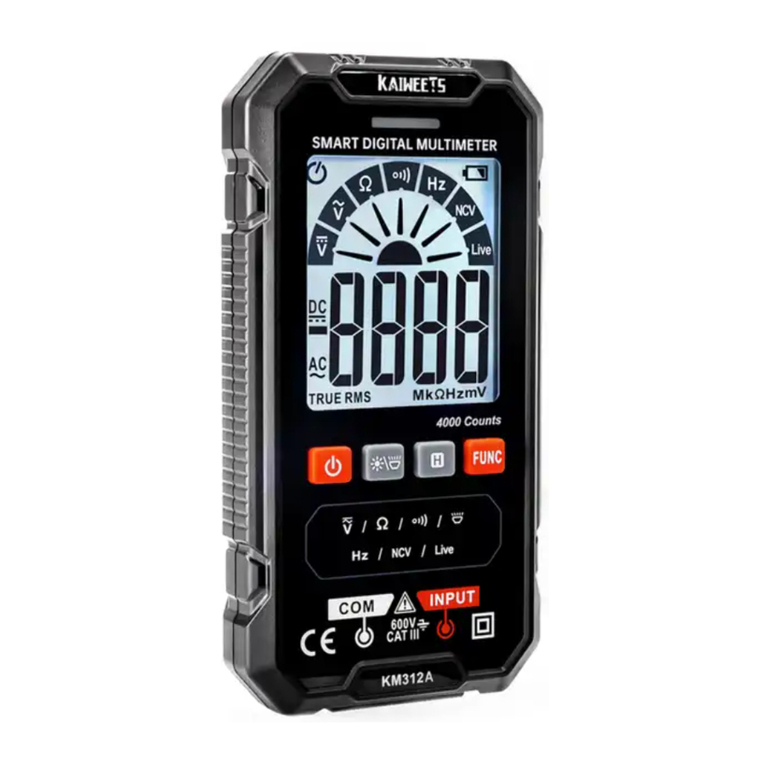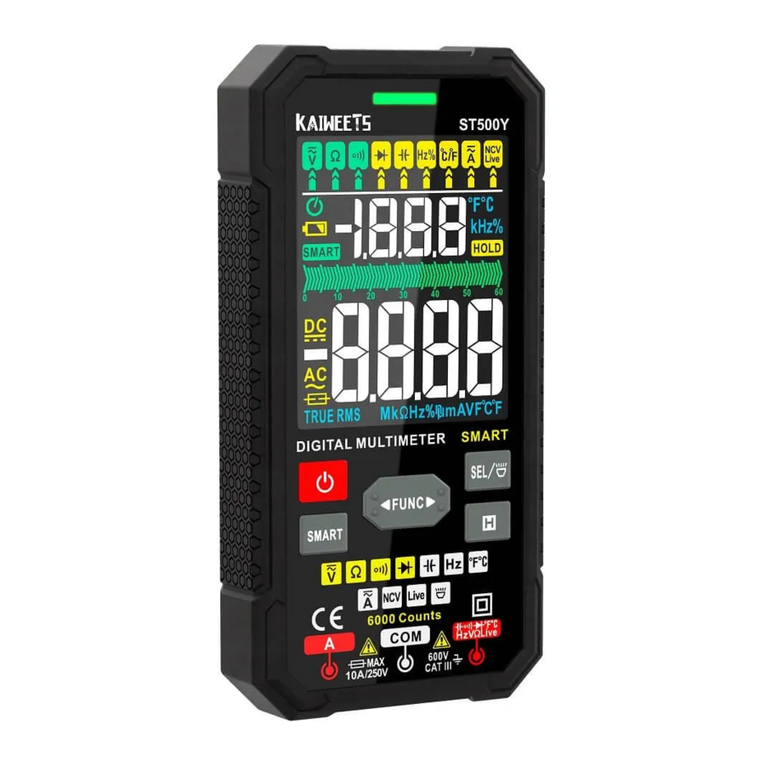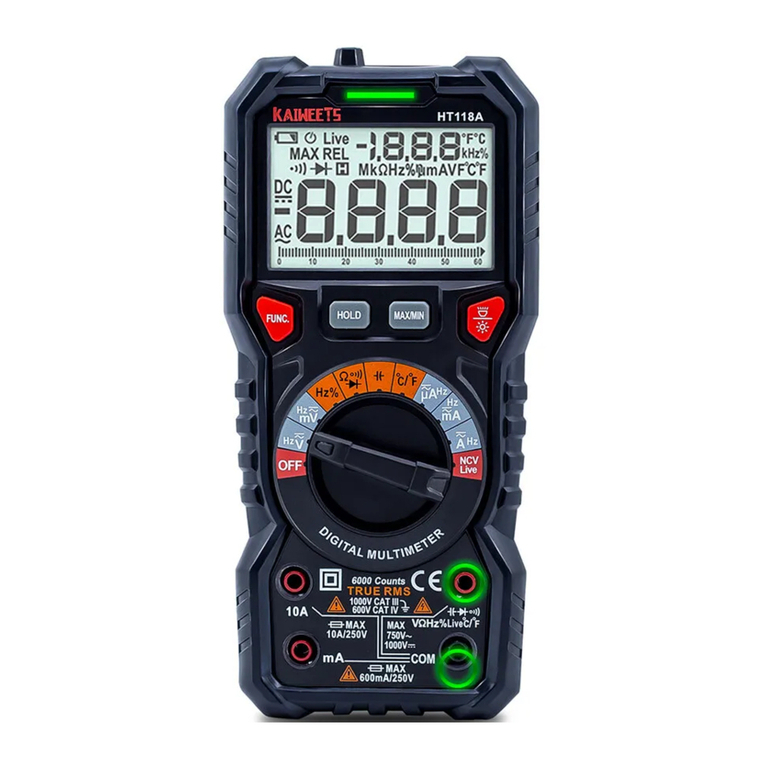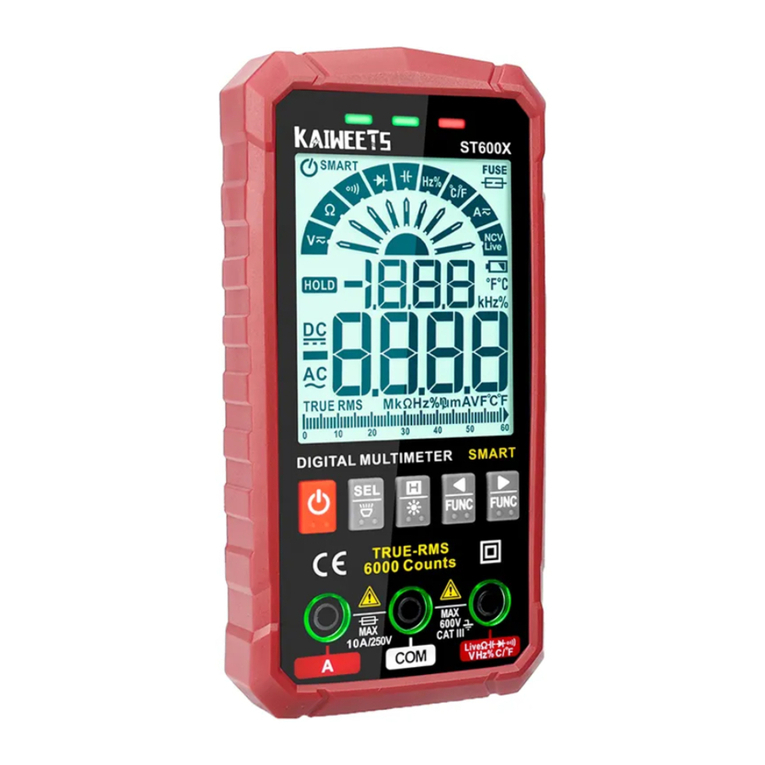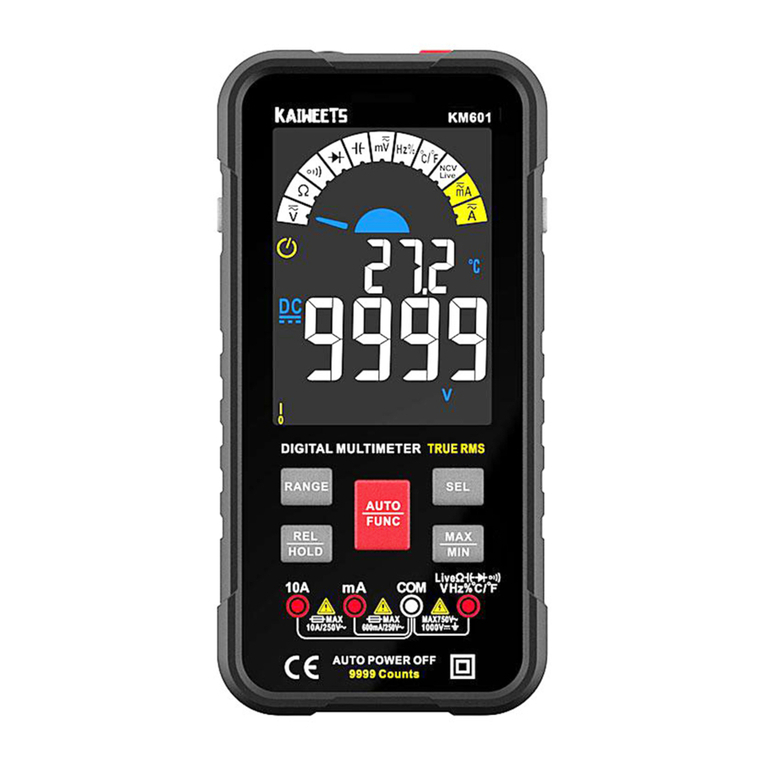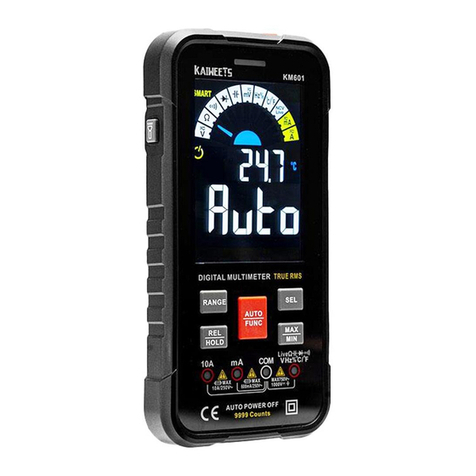
3
Before using the instrument, please check whether there is
any crack or plastic damage in the instrument case. If you do,
do not use it again.
Before using the instrument, please check whether the probe
is cracked or damaged. If so, please replace the same type
and the same electrical specifications.
The instrument shall be used in accordance with the
specified measurement category, voltage or current rating.
Please comply with local and national safety code. Wear
personal protection equipment (such as approved rubber
gloves, masks and flame retardant clothes, etc.) to prevent
being damaged by electric shock and electric arc due to
exposed hazardous live conductor
When it shows low battery indicator, please replace the
battery in time in case of any measurement error.
Do not use the instrument around explosive gas, steam or in
wet environment.
When using the probe, please put your fingers behind the
finger protector of the probe.
When measuring, please connect the zero line or the ground
line firstly, then connect the live wire; but when disconnecting,
please disconnect the live wire firstly, then disconnect the
zero line and ground line.
Before opening the outer cabinet or battery cover, please

